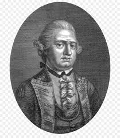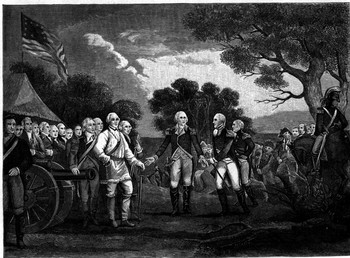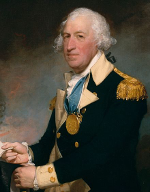Horatio Gates: American Revolutionary War Commander
Horatio Gates was an American Revolutionary War commander known for one big victory and one big defeat. He was born on July 26, 1727, in Maldon, Essex, England. Not much is known of his early life. 
He entered military service in 1745, with a commission to fight in the War of the Austrian Succession. He fought in Nova Scotia early in the French and Indian War and then accompanied General Edward Braddock on his expedition to control access to the Ohio Valley. (Other famous future commanders on this expedition included Thomas Gage and George Washington. Gates was injured early on in the expedition and did not see significant action. He served largely in administrative roles for the rest of the war. Gates had married Elizabeth Phillips in 1755; their son, Robert, was born three years later. Gates did not have the monetary or political connections of some of his fellow officers hungry for promotion, and his career stalled. He resigned his commission in 1769 and sailed to America. He became a plantation owner and re-established contact with George Washington. When the Revolutionary War began, Gates offered his services to Washington and the Continental Army. The Continental Congress appointed Gates a brigadier general and also Adjutant General of the army. He went to work employing his considerable administrative skills to systematizing the Continental Army records and orders. As good as he was at organizing people and things, Gates wanted a field command. He got one in June 1776, as head of the Canadian Department. Among the well-known officers he worked with during campaigns involving Lake Champlain and Fort Ticonderoga were Benedict Arnold and Major General Philip Schuyler, at the time head of the Northern Department. Gates marched his troops south to meet up with Washington in late 1776, after New York City fell to William Howe's forces. Gates was not with his men or with Washington for the victory at the Battle of Trenton, instead pretending to be ill in order to meet with the Continental Congress. It was no secret that Gates thought himself more qualified than Washington to be commander-in-chief. 
After British forces retook Fort Ticonderoga, Congress named Gates to replace Schuyler as head of the Northern Department. It was in this capacity that Gates ended up at Saratoga, as the commander of a force twice the size of his British counterpart, John Burgoyne, whose plan to isolate New England from the rest of the 13 Colonies had fallen apart because of a lack of reinforcements. The Continental Army's victory at Saratoga was a significant one. Not only did it result in the surrender of Burgoyne's entire force–nearly 6,000–but it also convinced France, which had been lurking behind the scenes, to join the war, on the side of the Americans. Gates next wanted to invade Canada. Washington vetoed the plan. Not long afterward, Gates became embroiled in what some historians call the Conway Cabal, an attempt to replace Washington with Gates as head of the army. Gates began sending his reports directly to Congress, not to Washington. Congress named Gates President of the Board of War, which made him technically superior to Washington. The plan to unseat Washington unraveled, in part because Washington still had the support of the army. Gates apologized, resigned from the Board of War, then accepted the role of commander of the Eastern Department. 
Gates continued in that role until 1780, when British forces seized Charleston, a key southern port. Congress removed Benjamin Lincoln as head of the Southern Department and installed Gates in his place. Gates led a force south in July 1780. He didn't have long to wait for a fight. On Aug. 16, British forces under Charles Cornwallis scored one of their most significant victories of the war, routing Gates and his men at the Battle of Camden. Gates, normally a cautious commander, threw caution to the wind and threw his ill-prepared troops against a larger British force. Cornwallis and his men captured about 1,000 colonial soldiers, and Gates took off north in retreat, leaving the rest of his mend behind. He was soon replaced as southern commander by Nathanael Greene, who would go on to have far more success than Gates did in his brief time in the south. Gates rejoined Washington's staff at Newburgh, N.Y., site of another strong attempt to remove Washington as commander-in-chief, in 1783. Washington kept his hand on the reins by making an emotional appeal to his men. In that same year, Elizabeth Gates died. Her husband retired the following year and returned home, to his Virginia estate. He married again, in 1786 to Mary Valens; the couple later moved to New York City. Gates was elected to the state legislature there in 1800. Late in life, he freed the slaves that he had kept on his estate. Horatio Gates died on April 10, 1806. |
|
Social Studies for Kids
copyright 2002–2025
David White





